Summary: Today’s restaurant POS systems are far more than simple cash registers. They are sophisticated tools that amplify operational efficiency and uncover new revenue possibilities. They come equipped with online ordering, mobile service capabilities, and insightful data analysis. Understanding POS costs and staying abreast of technological evolution are vital to leveraging the full potential of your POS system.
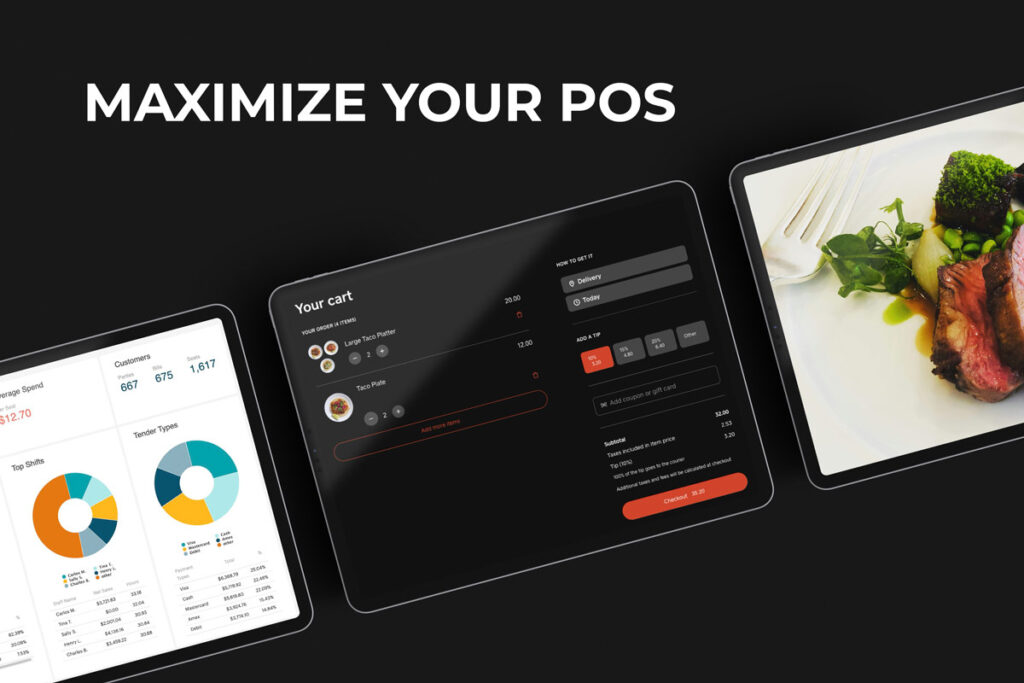
What if you could turn your POS system into your secret weapon? Every swipe of a credit card and every tap on the screen is more than just a transaction, it’s a flow of valuable data whispering the secrets of your business.
Are burgers flying off the grill every Tuesday evening? Time to stock up on extra patties for next week. Or perhaps your servers are spending their Sunday afternoons thumb-twiddling? A staffing adjustment could be in order.
A POS system is so much more than a mere medium for financial transactions. It’s a treasure chest brimming with insights: identifying top-selling dishes, the performance of your staff, and the peak hours that buzz with activity.
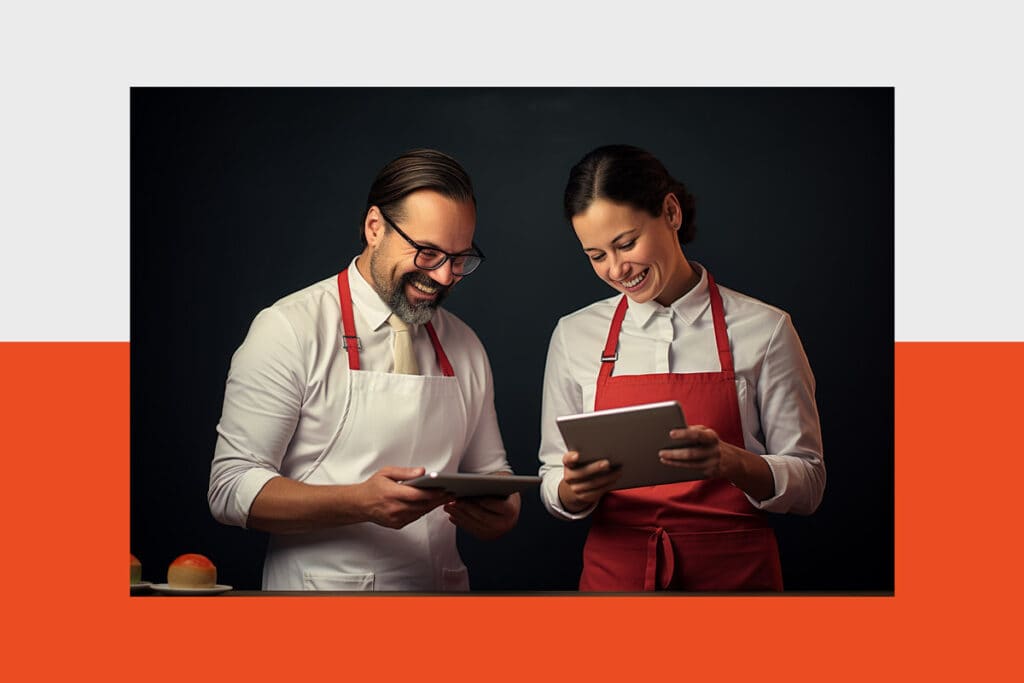
The Smart Investment
With the already razor-thin margins you navigate, opting for a modern restaurant POS might seem like rolling the dice. After all, conventional wisdom often equates ‘tried and true’ with ‘safe and sound’. However, this careful path could inadvertently stunt your growth.
In an era where online ordering and delivery reign supreme, having a POS system is no longer a luxury but a necessity – one that keeps you in the race to meet escalating customer expectations.
Another compelling advantage is the POS system’s ability to churn out sales reports. These reports are a gold mine, illuminating your business’s performance in detail and enabling you to make informed decisions about menu dynamics, pricing strategies, and workforce scheduling.
Embrace the possibilities of your POS. It’s not just about transactions, it’s about transformation.
Integrating newer features such as online ordering, retail, memberships and subscriptions means you can add additional revenue streams while providing the seamless experience diners crave.
Recommended reading: 35 Creative Restaurant Subscription & Membership Ideas

The Challenges of Technological Transformation in the Dining Industry
Even as we extol the virtues of advanced POS systems, we confront the sobering reality illuminated by a Reforming Retail article on the topic of The Disaster That Is Restaurant Tech. It spotlights a widespread trepidation within the food service industry, an industry that is often the last bastion of resistance against the tides of technological change.
Why Change Is Daunting
The restaurant realm is notoriously unforgiving, characterized by razor-thin margins and relentless rivalry.
The prospect of pouring precious resources into emerging technologies such as a state-of-the-art POS system can seem less like an investment and more like an audacious bet against steep odds.
There’s solace in the familiar, and in a demanding business climate where fiscal scrutiny is constant, the promise of tech-driven efficiency is frequently met with a skeptic’s eye.
The pressing question of whether the investment will bear fruit looms large, fostering an understandable hesitancy.

The Cost of Caution
Yet, this wariness isn’t without consequence; it carries the weight of inadvertent self-imposed limitations. In an age when consumer habits are shifting with dizzying speed and industry demands are transforming, digging heels in may mean getting left behind.
The reluctance to adopt, or even explore modern POS solutions could be denying restaurants a place at the table of industry front-runners.
Unleashing the Maximum Potential of Your Restaurant’s POS System
Inventory Management: Beyond Stock Counts
Keeping the Kitchen Stocked with Precision: Effective inventory management is no small feat, but with a POS system like Lightspeed, you can monitor stock levels in real-time and set up automatic reordering to prevent shortages.
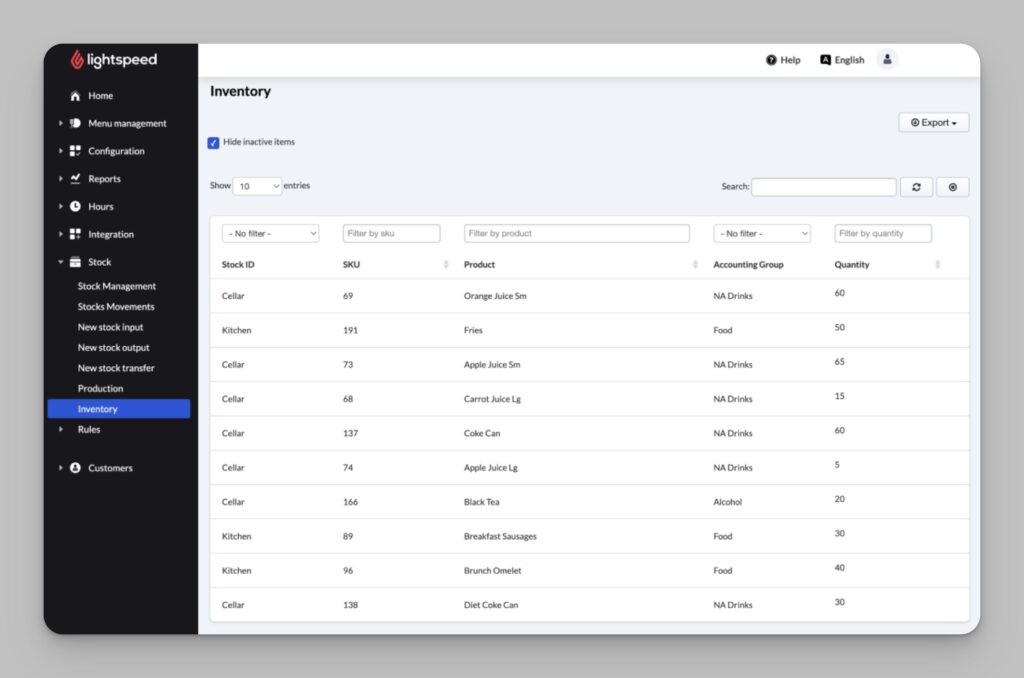
For example, use data from past trends to fine-tune order quantities, ensuring you’re not over-ordering perishable items, thus reducing waste and optimizing your inventory costs.
Employee Management: Streamlining Staff Operations
Empowering Staff with Efficiency: A POS system can play a pivotal role in staff management. For instance, Toast offers an employee scheduling feature allowing you to build schedules that align with forecasted business volumes.
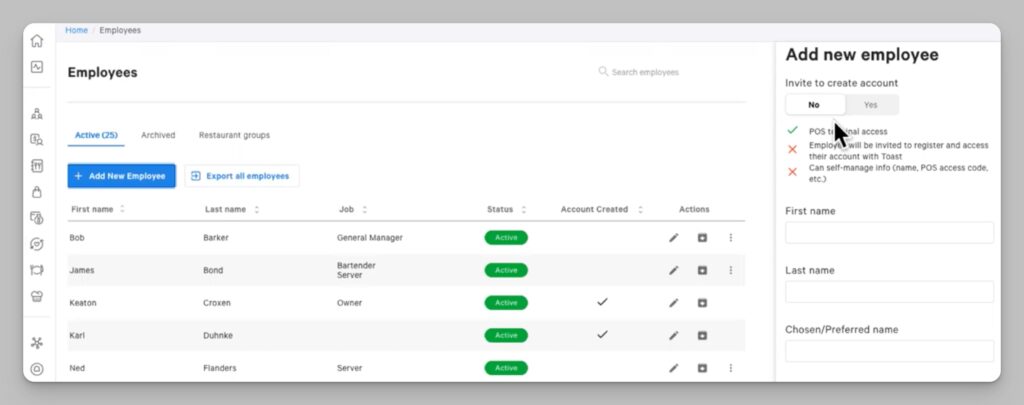
It can track hours, sales by staffer, and other metrics, so you can identify star performers and opportunities for staff training, all contributing to a more productive and satisfied team.
Data Reporting & Analytics: Making Informed Decisions
Sharpening Business Strategy with Data Insights: Use the reporting capabilities of your POS system, as seen with SpotOn, to delve into your sales, inventory, and customer feedback.
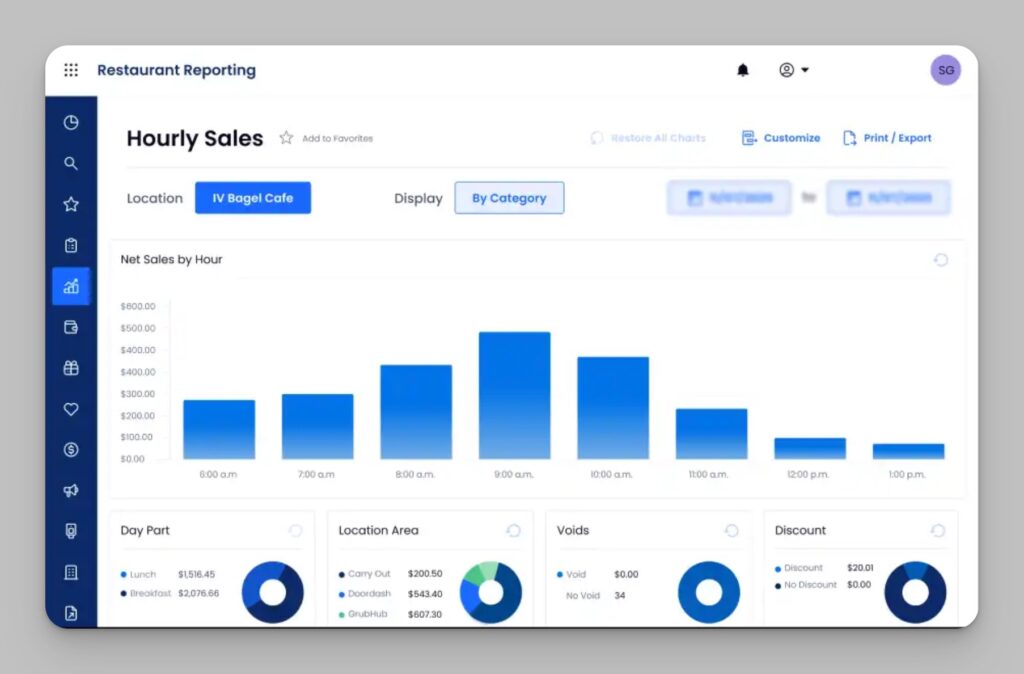
Such analytics can help identify which menu items are stars and which are underperforming, guiding you on menu optimizations that match your customers’ tastes and preferences.
Marketing & Customer Loyalty: Building Lasting Relationships
Deepening Customer Connections: Through integrated marketing features, POS systems can enable you to run targeted campaigns and manage loyalty programs effectively.
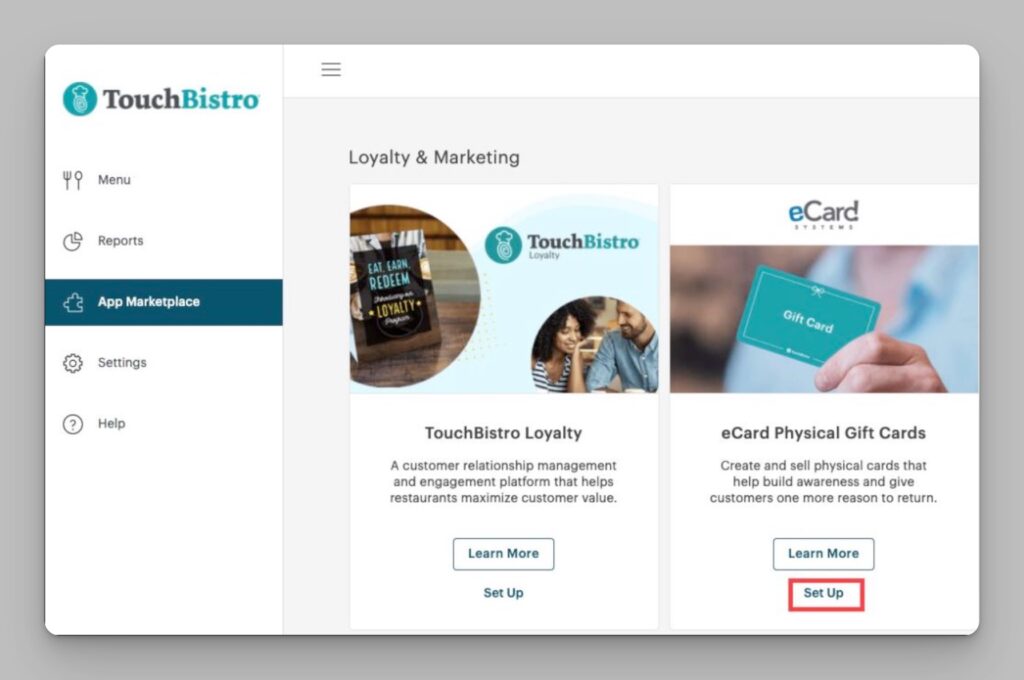
For instance, TouchBistro’s loyalty and marketing solutions can help you access customer data to offer personalized discounts or communicate special offers, fostering repeat business.
Reservation and Waitlist Management: Enhancing Dining Accessibility
Revolutionizing How Diners Book Tables: Modern POS systems can also handle reservations and waitlists.
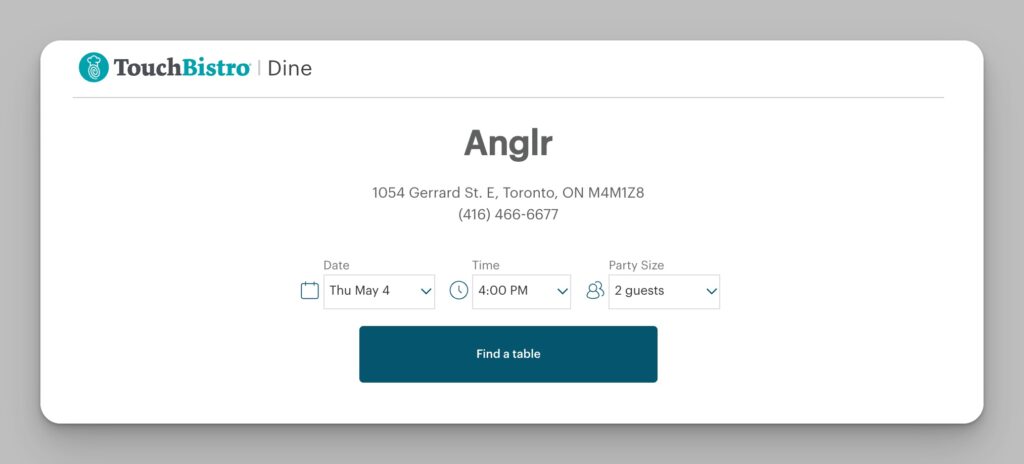
Products like TouchBistro Dine provide platforms where customers can book tables, and you can use this information to manage floor plans efficiently, tailor services to repeat customers, and reduce wait times.
Handheld Devices: Maximizing Tableside Service
Improving Table Turnovers and Customer Satisfaction: Incorporating handheld devices, such as tablets equipped with POS software like Toast Now or the GoTab POS, not only minimizes the chance of order mistakes but also speeds up service.

Servers can take orders, send them directly to the kitchen, and process payments all from the tableside, offering convenience and reducing wait times.
Read more:
Toast Now: A New Mobile App for Restaurants
GoTab Pocket POS: A Game-Changer in Tableside Service?
Online Ordering and Delivery: Streamlining Digital Sales
Perfecting the Art of Online Service: A POS system with robust online ordering and delivery management, like Square for restaurants, makes real-time menu syncing and order tracking simple.
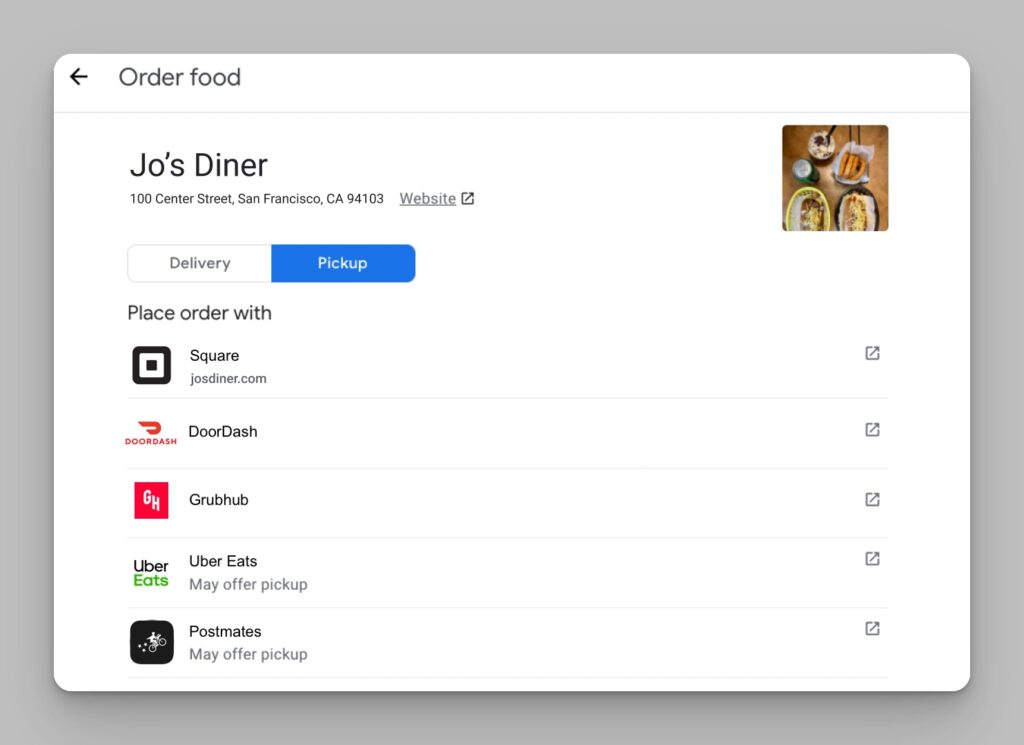
This ensures that customers always see current offerings and get accurate updates on their delivery status, resulting in a smooth and satisfying remote dining experience.
Retail and Merchandise: Capitalizing on Brand Loyalty
Building Brand Advocates with Merchandise: Extend your brand beyond the dining room by leveraging your POS system to sell restaurant merchandise.
For instance, by using your POS to manage sales of co-branded apparel or accessories, you can turn loyal customers into brand ambassadors and open up a new stream of revenue that requires little overhead.
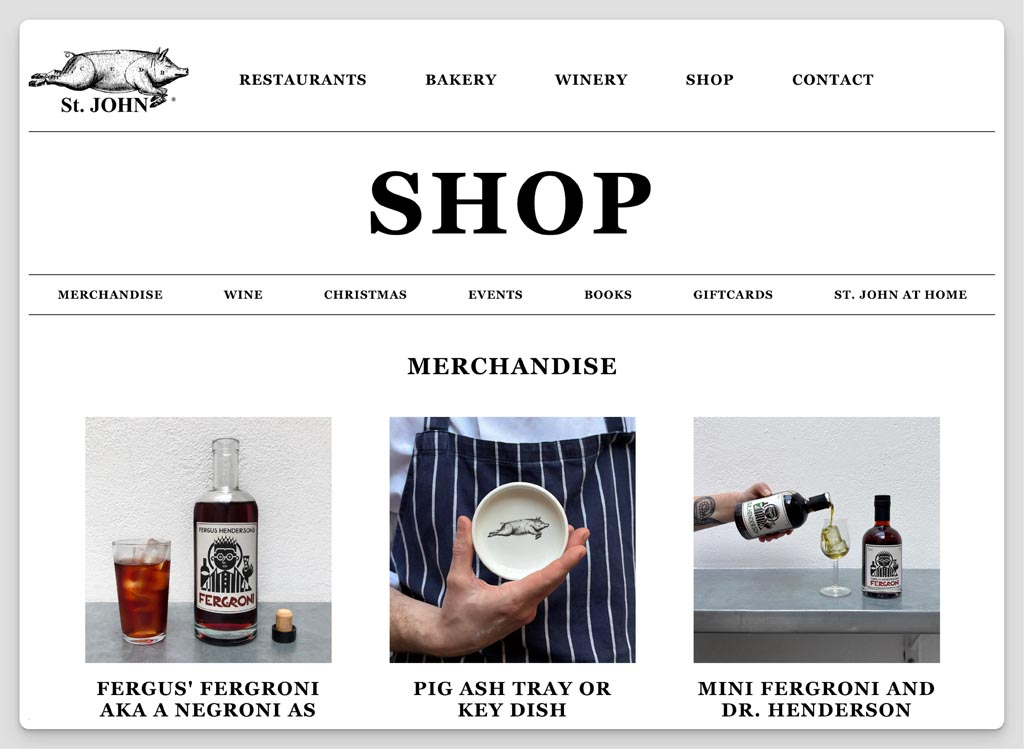
By integrating these dynamic features into your daily operations, your POS system can become a central hub that supports nearly every aspect of running a restaurant, enabling better decision-making and fostering a deeper connection with your guests.
Read more: Toast for Restaurant Retail: A Closer Look

The Resistance to New Technology
Overcoming resistance to new technology in the restaurant sector is a complex task, with factors ranging from fiscal prudence and allegiance to tradition, to simply not recognizing the technology’s extensive benefits.
Balancing Costs and Tradition with Forward-Thinking
For many restaurants, the cost and perceived risk associated with implementing advanced POS technology act as deterrents. Initial expenses and the uncertainty of a quick return on investment can make older systems, despite their limited functions, appear more comforting, while the broader utility of modern POS systems often goes underestimated
In the rush of daily operations, it’s easy to overlook the humble POS system, but savvy restaurateurs know that it’s not just a cash register – it’s the heartbeat of a restaurant, monitoring and pumping life into every aspect of the business.
Embracing Change While Easing Concerns
The good news is that today’s POS solutions are increasingly intuitive, designed with ease of adoption in mind, and backed by comprehensive training and support to ensure a seamless transition.
It’s critical to take a long-term view, weighing the up-front costs against enduring advantages like heightened efficiency and bolstered sales, which commonly justify the initial investment.
Modern POS systems also come equipped with advanced security protocols, offering peace of mind by protecting sensitive customer and business data against cyber threats.
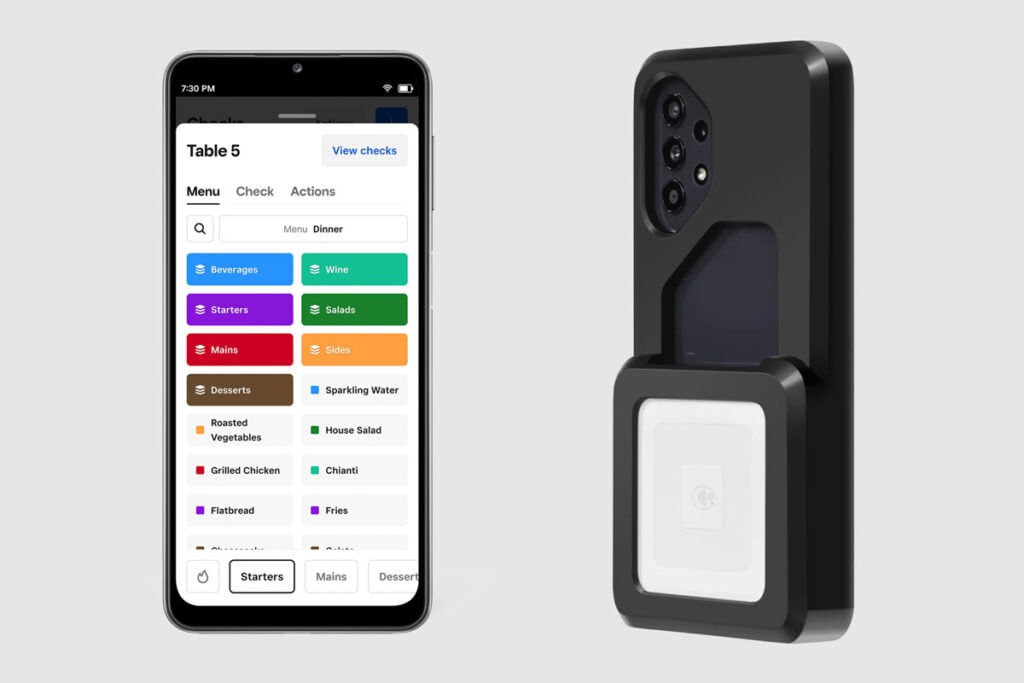
Demystifying the Financial Dynamics of POS Systems
Understanding the economic framework of POS systems is critical for restaurant managers, a key takeaway from the Reforming Retail blog mentioned previously.
Recognizing how your POS provider generates revenue can significantly impact your bottom line.
Unpacking the Profit Sources of POS Providers
POS companies typically have three profit avenues, transaction fees on payments, subscription services, or monetizing customer data. Transaction fees can add up quickly; with every tap, dip, or swipe, a small cut is taken. It’s easy to overlook how these fees can nibble away at profits, so strict financial scrutiny is imperative.
Delving into the Costs and Data Ownership
Payment fees vary, and understanding them is fundamental to gauging a POS system’s true cost. But there’s more, some vendors might also capitalize on the management and use of your data, charging extra to store and process the valuable information your POS collects. Never underestimate the worth of your data; it’s the key to personalizing service and driving repeat business.
Read more: The Ultimate Guide to Restaurant Payment Processing
Strategies for Economic POS Management
- Comparing Rates and Negotiating Terms: Don’t hesitate to compare payment processing rates and push for better terms. This can offer substantial savings.
- Assessing Total Cost of Ownership: Look beyond the sticker price. Factor in expenses for hardware, software maintenance, and features to gauge the genuine investment.
- Choosing Transparent Vendors: Opt for a vendor that lays all cards on the table, free from concealed fees. Transparency helps you manage your finances more effectively and ensures you’re not paying for the unexpected.
Preserving Your Data Goldmine
Ownership and access rights to customer data collected by your POS are critical. Position yourself to harness this data for customized marketing initiatives and improved customer relations.
Ensure your POS system adheres to data security standards and privacy laws, protecting both your customers and your enterprise from cyber threats and legal entanglements.

The Informed Approach to Choosing a POS System
Selecting the right POS system is not a task to take lightly—it’s critical to be an informed buyer. Understanding the ins and outs of your POS contract can mean the difference between a financial drain and a profitable venture.
Essential Considerations for POS System Purchases
When it’s time to sign on the digital dotted line for a new POS system, keep the following in mind:
- Feature Relevance and Adaptability: Scrutinize the system’s offered features and ensure they align with your day-to-day needs. More importantly, the system should allow for tailoring to fit your restaurant’s specific requirements, whether that’s customizing the menu or tracking inventory.
- User-Friendliness and Support: A POS system should be intuitive and easy to navigate. Confirm that adequate training and support are part of the package to ensure your team can use the system effectively from the get-go.
- Integration Capability: A good POS system should play nicely with other software and applications that are essential to your operations. Whether it’s an employee scheduling tool or your accounting suite, seamless integration is key.
- Growing with Your Business: Your POS system should be a partner in your restaurant’s growth, able to handle whatever scale you aspire to reach without necessitating frequent, costly upgrades or complete system replacements.
- Transparent Expense Structure: Evaluate all associated costs, from initial hardware investments to ongoing subscription fees and beyond. Keep an eye out for any hidden charges that could surprise you down the line.
- Flexible Payment Processing: Understand what payment processing services are offered and at what cost. Some POS systems might lock you into their services, while others provide the flexibility to choose a processor that best fits your financial model.
- Data Control and Protection: Confirm who holds the reins over your data and ensure the system has robust security protocols to safeguard your restaurant’s and customers’ sensitive information.
Navigating POS Contract Nuances
The devil can often be in the contractual details, so give these particular areas your attention:
- Contract Terms: Take note of the duration, renewal, and exit conditions of the contract. You’ll want to know upfront about any fees tied to terminating the contract early.
- Service Expectations: SLAs specify what you can expect in terms of system reliability and vendor support. This transparency will let you hold the vendor accountable.
- Future-Proofing Your System: How are updates and new features rolled out? Ensure that your system will not fall behind the times, which could necessitate more expense and hassle.
- Comply or Goodbye: Finally, ensure that your POS system and its provider meet all relevant legal, regulatory, and compliance requirements. A system that doesn’t meet industry standards is a liability waiting to happen.
Taking the time to meticulously evaluate these elements will position your restaurant to make a savvy, strategic POS system choice—one that supports your current operation and ambitiously propels you toward future success.
Read more: Best Restaurant POS Systems

The Future Direction of Restaurant POS Systems
The Rise of Cloud-Based Systems: The shift to cloud-based POS systems underscores a move towards more accessible, flexible operations. These systems unlock the ability to manage business remotely, ensuring owners and managers can keep a pulse on their operations from any location.
Read more: 22 Benefits of a Cloud-Based Restaurant POS vs Legacy
Real-Time Operation and Cost-Efficiency: One of the greatest strengths of cloud-based setups is the provision of real-time data and the capability to instantaneously enact changes system-wide.
Compared to the sizable initial expenses traditional systems often entail, cloud-based POS solutions offer a subscription-based approach that can be more economical, with the added perks of continuous updates and support.
Scalability and Security: Cloud technology scales according to business growth. Expanding your enterprise becomes a simpler task without the cumbersome costs typically associated with traditional systems. Data security, too, is heightened in cloud-based systems, with automatic backups safeguarding against potential hardware failures.
Embracing the Power of AI: There are many potential benefits in AI, machine learning, and big data, attracting not only insights into consumer behavior but also helping to refine inventory control and foresee market tendencies.
Read more:
Can Lightspeed’s New AI Tools Simplify Restaurant Operations?
How Square’s New AI Features Can Benefit Your Restaurant
Engagement and Loyalty: Integrated customer engagement mechanisms are taking modern POS systems beyond mere transactional tools. Loyalty programs, tailored marketing, and feedback channels are becoming staple features that help foster devoted customers.
Environmental Consciousness: The drive toward environmental sustainability may soon see POS systems advocating for digital alternatives, energy efficiencies, and initiatives to cut down food waste.
Read more: Toast Introduces Food Waste Reduction Tools
In sum, the trajectory for restaurant POS systems is veering towards solutions that are more aligned with the cloud, emphasizing integration, real-time operations, AI, and expansive customer interaction features.
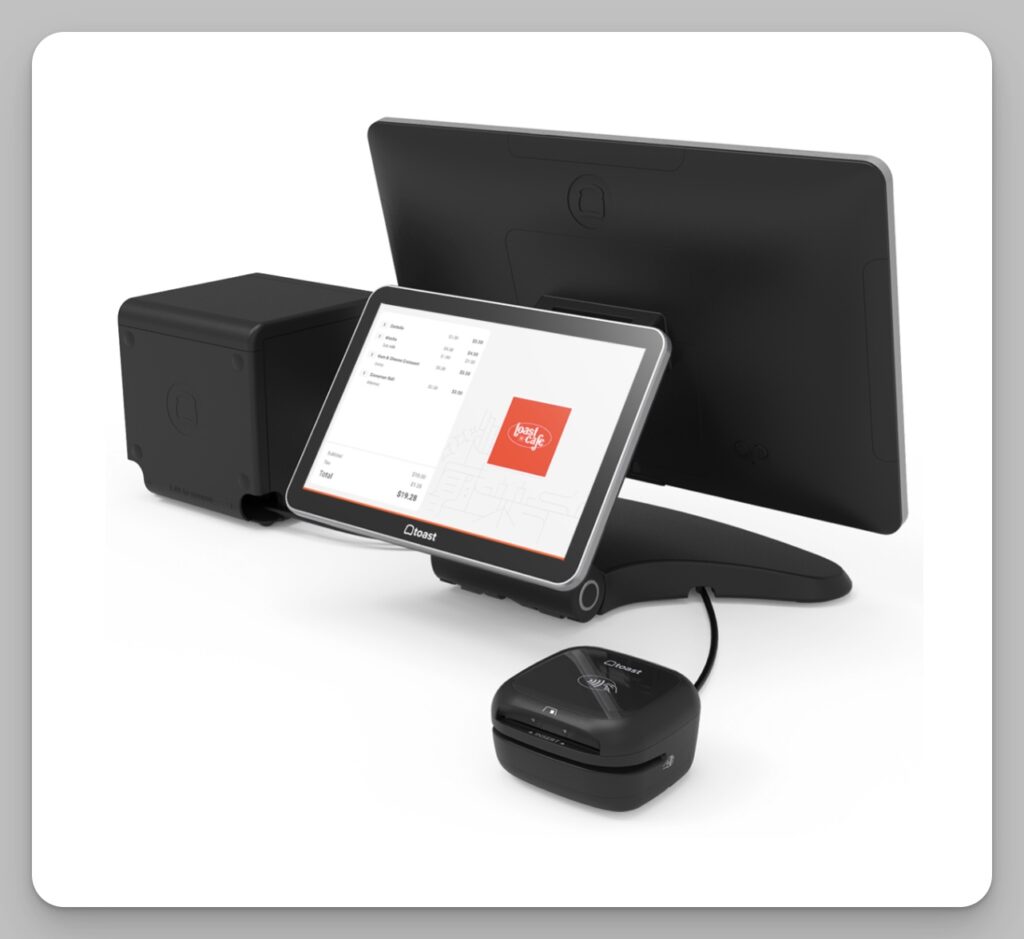
Conclusion- How Your POS System Can Be Your Restaurant’s Powerhouse
Empowering Businesses Through Advanced Features: Modern POS solutions are versatile and capable of managing an array of critical functions such as inventory tracking, staff scheduling, customer interactions, retail features, and sophisticated data analysis.
Data: The Navigator for Informed Strategy: The data harvested by your POS system is a treasure trove for strategic planning. It’s the compass that guides menu optimization, staffing logistics, and marketing initiatives.
Elevating the Customer Journey: A restaurant’s reputation hinges on customer satisfaction. POS systems play a pivotal role here by speeding up service, personalizing guest interactions, and ensuring precision in order taking and billing.
Keeping Pace with Technological Evolution: The features and capabilities of POS systems are constantly evolving. Keep your eye on our POS News page for new updates, functionalities, and industry trends.
Future-Proofing for Continued Success: Adopting cutting-edge POS technologies sets your restaurant up for long-term success. As the industry evolves and customer expectations shift, having an up-to-date POS system becomes indispensable in maintaining a competitive edge.

Additional Resources and Recommendations
For those of you ready to take the leap or looking to upgrade your current setup, many resources are available here at KitchenBusiness.com.
Our individual POS system reviews:
- Toast POS Review: Features, Pros & Cons
- Lightspeed Restaurant POS Review
- Square for Restaurants POS Review
- TouchBistro POS Review
You can also see how they rate our in-depth review of the top restaurant POS systems.
Or explore our recommendations for POS alternatives if you’re looking to switch systems.
You can also explore our article highlighting the essential features of a restaurant POS system and our guide to restaurant payment processing.
Don’t just let technology happen to your restaurant; harness it, understand it, and make it work for you.



